In the shadows of history, there exists a chapter often overlooked, a tale of suffering and captivity that transcends the boundaries of color. While the pages of our collective memory are filled with narratives of colored slaves enduring the cruelties of transatlantic trade, there exists a dark corner that conceals the anguish of another group – the forgotten white slaves.
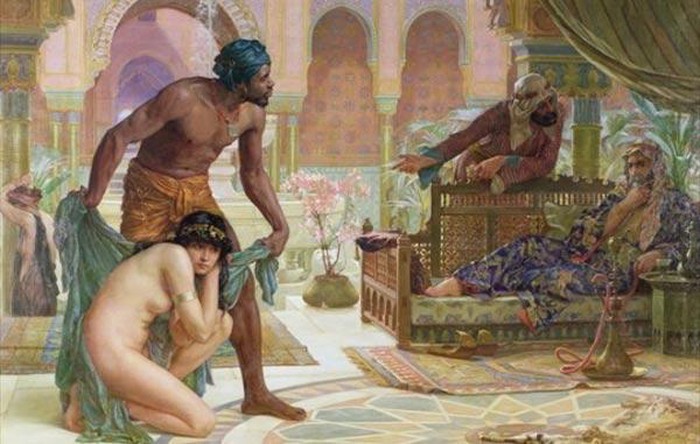
The term “Barbary pirates” referred to marauders haunting the coastal regions and offshore waters of the Mediterranean. Their strongholds, such as the ports of Salé, Rabat, Algiers, Tunis, and Tripoli, collectively formed the infamous Barbary Coast. It was from here that these pirates, driven by greed and cruelty, operated – a dark force that etched its mark on history.
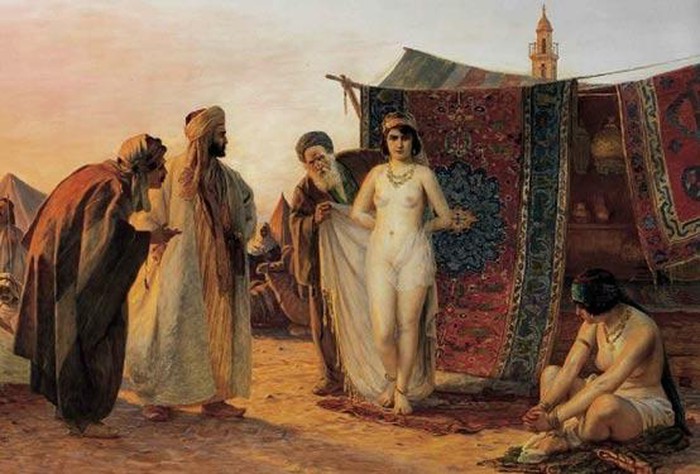
Barbary Slavery: The Tragic Fate of White Skins – Part 2
Barbary pirates used white male slaves as “living oars.”
According to North African history, Barbary pirates emerged around 710 AD. Until the 14th century, they operated mainly off the coast of the Barbary regions, attacking and plundering merchant ships.
In the 15th century, Europe discovered Africa. During the Middle Ages, the slave trade was prevalent in the Black Continent. Many communities here punished offenders by depriving them of freedom and human rights. Greedy Western traders saw a significant opportunity in buying colored slaves and transporting them to Europe, initiating the era of African slave trade.
Initially, Barbary pirates had rudimentary shipbuilding techniques, limiting them to coastal and Barbary Sea operations.
Europe brought advancements, improving the pirate ships’ systems in the North African region. Starting from the 16th century, Barbary pirates easily conquered the Atlantic Ocean, reaching the European shores of the Mediterranean.
Tragic Consequences
Barbary Slavery: The Tragic Fate of White Skins – Part 3
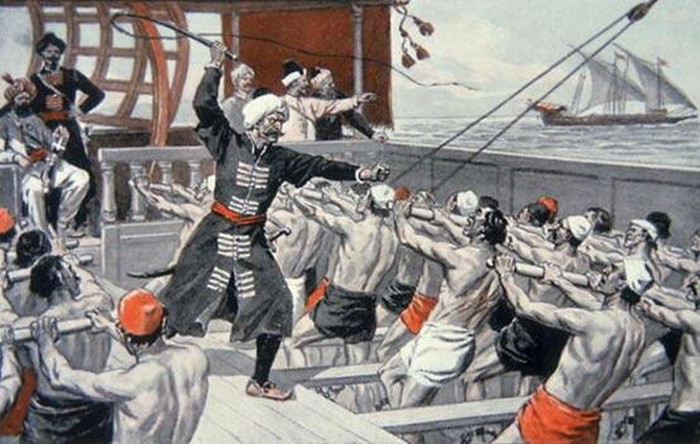
White child slaves were sold to the Ottoman Empire to serve as soldiers.
In reality, Barbary pirates attacked all victims in sight, showing no discrimination based on age, skin color, religion, or ethnicity. Their ranks comprised diverse races, nationalities, and religions. The only commonality was their base in Barbary.
The goal of Barbary pirates was plundering. Whenever they attacked a boat, a port, or a village, they looted everything. In the era of slave trade, humans were considered commodities. Barbary pirates captured anyone they could and brought them to the Barbary Coast for sale, labeling them as Barbary slaves.
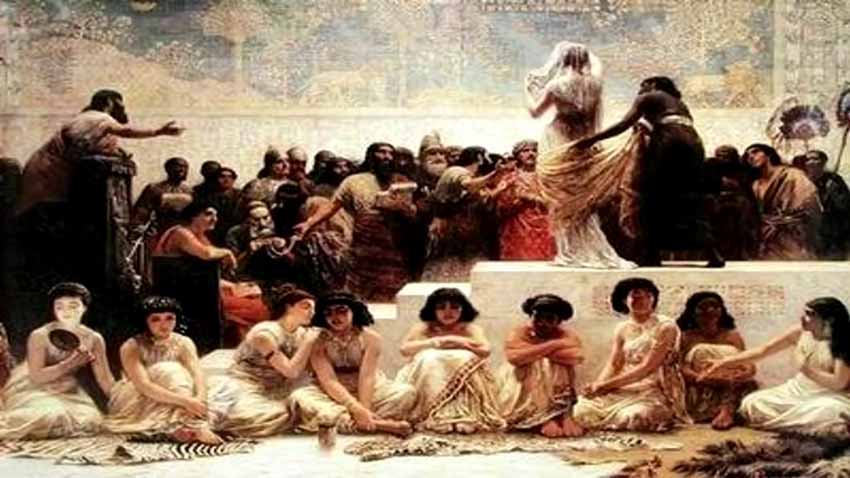
White individuals were just a portion of the Barbary slaves. Nonetheless, they were still referred to as white slaves, as they stood out in the world of black-skinned individuals.
Furthermore, this term reflected the contrast with black slaves in the white world.
The white victims of Barbary pirates included traders, travelers (who arrived in Africa via sea and docked in North Africa), and the inhabitants of coastal villages and towns in the Mediterranean.

From the moment they were forced onto the pirate ships, their fate as Barbary slaves began. During the journey to Barbary, they were provided minimal food and water. After enduring prolonged shackling, confinement, hunger, and seasickness, many of them became emaciated and weak. Some didn’t survive the voyage and were thrown overboard by the pirates.
Upon reaching Barbary, they were immediately dragged ashore, stripped of their clothing, and chained by their hands and feet, then taken to the slave market.
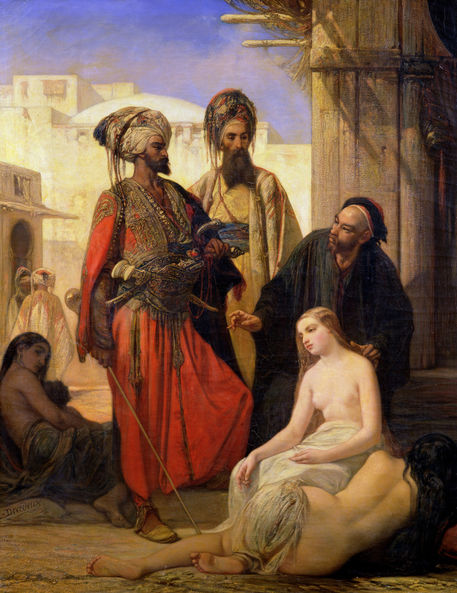
At the slave market, white male slaves were auctioned off for forced labor. Their destiny was a lifetime of forced hard work. The most horrendous fate was reserved for those turned into “living oars.” The pirates’ ships during this period were propelled by sails and rowing. The “living oars” were chained under the ship’s hull and forced to exert their strength continuously, rowing the ship. In addition to this grueling labor, they had to eat, sleep, and perform bodily functions in the same confined space.
White female slaves were sold to the aristocratic class in Europe and the Middle East as maids, concubines, or sources of pleasure to alleviate sorrow. White children were not exempt; they were incorporated into the “young army,” subjected to rigorous military training to become soldiers of the Ottoman Empire (Middle East).
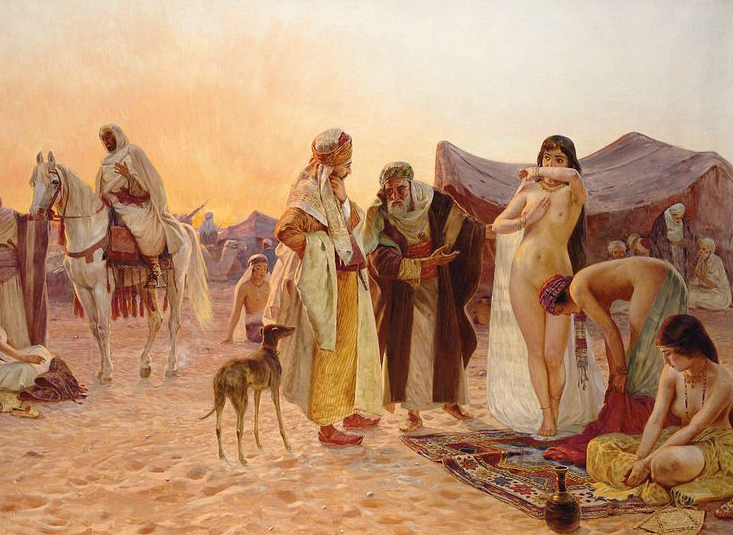
A 400-Year Journey
As European tourists to Africa decreased due to fear of Barbary pirates, these pirate groups relentlessly attacked coastal villages along the Mediterranean. The long stretch of coastline from Spain to Italy fell victim to their incessant raids. In the Iberian Peninsula (southwest Europe) alone, it is estimated that between 100,000 to 250,000 white individuals were kidnapped.
During the 17th and 18th centuries, Barbary pirates roamed freely along the European coastlines. By the estimated year 1780, they had captured and enslaved 1.25 million white individuals. In terms of manpower and weaponry, European naval forces were superior to those of the Barbary pirates.

However, during naval battles, the pirates outnumbered the Europeans and were agile combatants. Their lightning-fast attacks and retreats left European fleets powerless.
By the late 17th century, European countries sharing the Mediterranean coastline collaborated to counter Barbary pirates. They fiercely protected merchant ships, preventing pirates from getting too close. Consequently, trade between Europe and Africa became safer.

As the dark chapter of white slavery unfolded along the coasts of the Mediterranean, a stark contrast persisted on the other side of the Atlantic. The transatlantic slave trade, predominantly involving black individuals, burgeoned with an alarming momentum, reaching Europe and America. The cries of the oppressed resonated across oceans, creating a haunting symphony of suffering.
While the transatlantic slave trade gained momentum, the coastal villages of the Mediterranean found themselves caught in a cycle of neglect and terror. The specter of Barbary pirate raids cast a long shadow, forcing European seaside communities to abandon their idyllic fishing villages, retreating inland in a desperate bid to escape the clutches of marauders.
As the 19th century dawned, a glimmer of hope appeared on the horizon. European navies, joining forces with the U.S. Navy, initiated concerted efforts to pursue and dismantle the Barbary pirates. Many pirate bands met their demise, and the seas that once echoed with the cries of the abducted began to regain a semblance of tranquility. However, remnants of this menace persisted, with surviving pirates clinging to their malevolent ways, continuing to inflict suffering upon the unsuspecting.
It wasn’t until the dawn of the 20th century that the chains of oppression began to shatter globally. In 1911, the abolition of slavery marked the end of an era, bringing an end to the heinous activities that had plagued humanity for centuries. Across Africa and the Middle East, the shackles that bound Barbary slaves were finally shattered, and the long-overdue dawn of liberation emerged.
In the annals of history, the era of white slavery met its demise, coinciding with the end of black slavery. The collective conscience of humanity, scarred by the horrors of both, took a tentative step towards a future where the echoes of suffering would hopefully be replaced by the resounding chorus of freedom and equality.